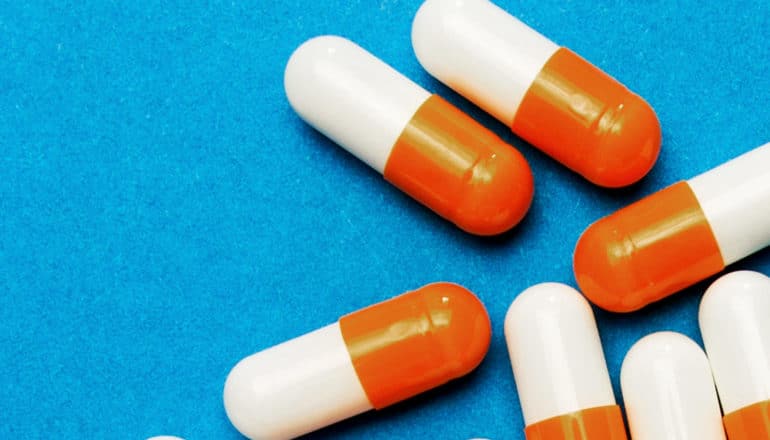
More than half of patients hospitalized with suspected COVID-19 in Michigan during the state’s peak months received unnecessary antibiotics early in their stay, a new study shows.
Testing soon showed, however, that 96.5% of these patients only had the coronavirus, which antibiotics don’t affect.
The 3.5% of patients who arrived at the hospital with both kinds of infection were more likely to die. But the study suggests that faster testing and understanding of infection risk factors could help hospital teams figure out who those patients are—and spare the rest the risks that come with the overuse of antibiotics.
The data came from 38 hospitals taking part in a massive statewide effort called Mi-COVID19 that launched within weeks of the first diagnosed COVID-19 case in Michigan on March 10. The Mi-COVID19 registry includes detailed data from pre-, post-, and in-hospital care of more than 1,700 hospitalized COVID-19 patients treated in hospitals of all sizes and kinds across Michigan.
During March and April, the state emerged as one of the nation’s early hotspot states. The researchers hope the new data will help patient care teams in current and future hotspots.
The risks of too many antibiotics
In addition to widespread overuse of antibiotics, the study shows that hospitals varied widely in their use of antibiotics among people newly hospitalized for suspected COVID-19. In some, only a quarter of suspected COVID-19 patients received them within two days of hospitalization, while in others, nearly all did.
As time went on, and the COVID-19 test turnaround time shortened, the use of antibiotics dropped—but was still too high, says Valerie Vaughn, a hospitalist physician who helped launch Michigan Medicine’s COVID-19 intensive care units and is lead author of the study in Clinical Infectious Diseases.
“For every patient who eventually tested positive for both SARS-CoV-2 and a co-occurring bacterial infection that was present on their arrival, 20 other patients received antibiotics but turned out not to need them,” says Vaughn.
“These data show the crucial importance of early and appropriate testing, with rapid turnaround, to ensure appropriate use of antibiotics and reduce unneeded harm.”
In addition to putting patients at risk of opportunistic infections like Clostridium difficile that can worsen their odds of recovery, antibiotics also pose a broader risk of feeding the epidemic of drug-resistant bacteria that already plagues many hospitals and can put patients and staff at risk.
Older people, people who had come to the hospital from a nursing home, and people admitted straight to intensive care, were more likely to turn out to have a bacterial infection in addition to coronavirus. Half of these patient died, compared with 18% of those without bacterial infections.
Those who received antibiotics were more likely to be older, have lower body mass index measurements, have visible signs of infection on their chest X-ray, and to be in more critical condition when they arrive at the hospital.
Faster test results could help
COVID-19 differs in important ways from regular pneumonia, so standard “antibiotic stewardship” techniques may not work, says Vaughn, who has studied and worked to improve antibiotic prescribing for hospitalized pneumonia patients.
For instance, many suspected COVID-19 patients had their blood tested soon after admission to the hospital to look for a substance called procalcitonin, which is often used as an early indicator of bacterial infection while doctors wait for more definitive test results.
Just over half of those who turned out to have a bacterial infection plus COVID-19 had a high procalcitonin reading. But so did 22% of those who didn’t have bacterial infections. However, a low procalcitonin reading was almost certain to mean that the person didn’t have a bacterial infection.
However, elevated white blood cell counts were a good predictor of who had a bacterial infection.
The faster patients got their COVID-19 viral test results back, the faster their antibiotics stopped. Half were stopped within a day of a positive coronavirus test. The turnaround time for such tests decreased over time, with 89% getting their results within a day in May compared with 54% in March.
The vast majority of the patients tested for bacterial infections didn’t have a test that looks in the respiratory tract, possibly because these tests require health workers to interact with patients’ airways—which can generate aerosols and risk transmitting coronavirus—or because they require a sample of coughed up sputum, which most of the patients didn’t have because of the “dry cough” that typifies COVID-19.
“Since their SARS-Cov2 infection explains their symptoms, we should all be more judicious with prescribing antibiotics unless we see signs of a bacterial infection,” says Vaughn.
“We need better guidance to help clinicians figure out if the cause of a rapid decline in condition is due to cytokine storm or bacterial infection, and better antibiotic stewardship programs to support physicians in determining if they need to order antibiotics, and if so, for how long and with what tests for bacterial infection.”
The study actually undercounts the percentage of patients who received antibiotics, Vaughn notes, because it left out those who received azithromycin. For a time that powerful drug was seen as promising for COVID-19 patients, in combination with hydroxychloroquine, though it has since proved ineffective or even potentially harmful.
Patients transferred to another hospital as part of their initial COVID-19 stay were also omitted from the analysis.
Additional coauthors are from University of Michigan, the VA Ann Arbor Healthcare System, and St. Joseph Mercy Health Care. BCBSM and the Agency for Healthcare Research and Quality funded the work.
Source: University of Michigan
The post COVID-19 patients get needless antibiotics, data suggests appeared first on Futurity.
from Futurity https://ift.tt/2Eyy6cV
No comments:
Post a Comment